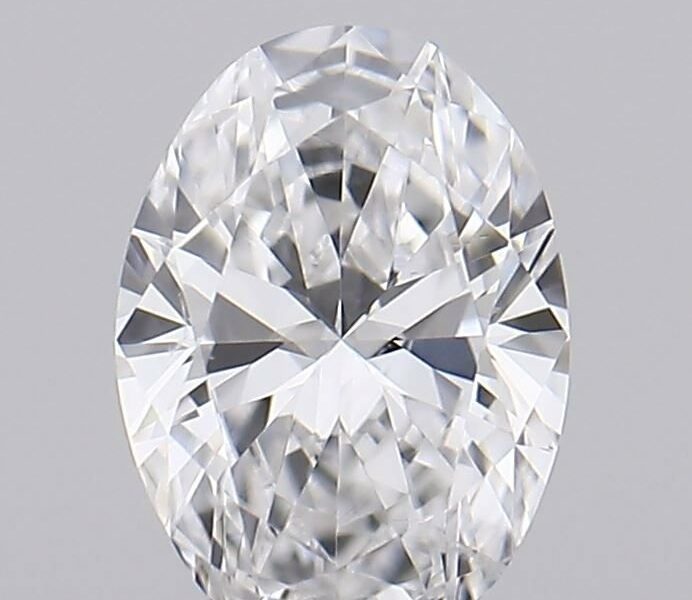Gold & Silver IRA Guide: Frequently Asked Questions Explained

Key Takeaways
- A Gold & Silver IRA allows you to invest in physical precious metals within a retirement account.
- Setting up a Gold & Silver IRA involves selecting a Gold IRA Company and purchasing IRA-eligible metals.
- There are specific requirements for precious metals to be included in an IRA, including purity and form.
- Understanding the costs, contribution limits, and tax implications is crucial for maximizing the benefits of a Gold & Silver IRA.
- It’s essential to know how to transfer funds, sell your metals, and integrate a Gold & Silver IRA into your overall retirement strategy.
What is a Gold & Silver IRA?
Let’s get straight to the point: a Gold & Silver IRA is a self-directed Individual Retirement Account (IRA) that holds precious metals. It’s a savvy move for diversifying your retirement portfolio and hedging against economic uncertainty.
Definition and Purpose of a Precious Metals IRA
A Precious Metals IRA is more than just a regular IRA. It’s a specialized account that allows you to own physical gold, silver, and other precious metals. This type of IRA is designed to provide you with the unique benefits of precious metals, such as their intrinsic value and stability during times of economic turbulence. Think of it as a safety net that can help protect your retirement savings from inflation and market fluctuations.
Types of Metals Allowed in an IRA
Not all shiny things can be part of your Gold & Silver IRA. The IRS has strict rules about what qualifies. Generally, your IRA can include:
- Gold that is 99.5% pure
- Silver that is 99.9% pure
- Platinum and palladium that are 99.95% pure
These metals can come in the form of coins or bullion bars. But remember, they must meet the fineness requirements and be produced by a manufacturer accredited by certain exchanges or national governments.
Starting Your Gold & Silver IRA Journey
How to Set Up Your Account
First things first, to get your Gold & Silver IRA up and running, you need to choose a Gold IRA Company. Look for one with a solid reputation, transparent fee structure, and excellent customer service.
Choosing a Reliable Gold IRA Company
When selecting a trustworthy gold IRA provider, consider the following:
- Are they experienced with Gold & Silver IRAs?
- What fees do they charge, and how are they structured?
- Can they provide you with a list of IRA-eligible precious metals?
- Do they have secure storage options?
Once you’ve picked your gold IRA provider, you’ll open an account with them, fund it by transferring money from an existing retirement account or making a fresh contribution, and start selecting your metals.
Alright, that’s the beginning of your journey to securing your financial future with a Gold & Silver IRA. We’ve covered the basics, but there’s more to learn. Next we need to delve deeper into selecting your precious metals, understanding the financial implications, and managing your investment to ensure your retirement is as golden as the metals you’re investing in.
IRA Contribution Limits and Tax Benefits
- The annual contribution limit for IRAs, including Gold & Silver IRAs, for 2024 is $7,000, or $8,000 if you’re age 50 or older.
- Contributions to a traditional IRA may be tax-deductible, depending on your income and whether you have a retirement plan at work.
- Earnings in a Gold & Silver IRA grow tax-deferred, meaning you won’t pay taxes on the gains until you make withdrawals.
- Roth IRA contributions are made with after-tax dollars, and qualified distributions, including earnings, are tax-free.
Understanding these limits and benefits is essential because it can significantly impact your retirement savings. By contributing the maximum amount allowed each year and taking advantage of the potential tax benefits, you’re effectively increasing your retirement nest egg. It’s a simple strategy, but it requires discipline and a clear understanding of the rules.
Now, let’s talk about managing your investment. You’ve made the wise choice to diversify with precious metals, but it’s not just about buying gold and silver and forgetting about it. You need to manage and secure your investment properly.
Managing and Securing Your Investment
Once you’ve purchased precious metals for your IRA, you can’t just keep them in your home safe or buried in the backyard. The IRS requires that these assets be stored in a secure, IRS-approved depository. This means that your gold and silver will be kept in a facility that specializes in safeguarding precious metals.
It’s important to choose a depository that’s not only IRS-approved but also has a strong track record for security and customer service. You should be able to sleep soundly at night, knowing your investment is in good hands.
Storing Your Gold & Silver Safely
When it comes to storing your precious metals, here’s what you need to know:
- The depository should have state-of-the-art security systems in place.
- They must offer insurance to protect your investment against theft or loss.
- You should have the option to choose between segregated or non-segregated storage.
Segregated storage means your metals are kept separately from other investors’ assets, while non-segregated storage may be less expensive but your metals are commingled with others. The choice is yours, but make it wisely.
Insurance and Protection Strategies
Insurance is not just an option; it’s a necessity. Ensure that your chosen depository provides comprehensive insurance that covers the full value of your precious metals. This way, even in the worst-case scenario, your investment is protected.
Now, you might be thinking about the future and wondering what happens if you want to move your retirement funds around. That’s where rollovers and transfers come into play.
Rollovers and Transfers
Rollovers and transfers are methods for moving funds between retirement accounts without incurring taxes or penalties. A rollover generally occurs when you’re changing jobs or retiring, while a transfer is when you move funds between like accounts (for example, from one IRA to another IRA).
Understanding the difference and the rules that apply is critical because mistakes can be costly. You don’t want to inadvertently trigger a taxable event and get hit with penalties.
Transferring Existing Retirement Funds
If you’re transferring funds to a Gold & Silver IRA, here’s what you should do:
- Decide which existing retirement funds you want to transfer.
- Contact your current custodian to initiate a direct transfer to your new Gold & Silver IRA provider.
- Ensure that the transfer is performed as a “trustee-to-trustee” transfer to avoid taxes and penalties.
This process can be straightforward, but it’s essential to communicate clearly with both parties to ensure that the transfer is completed correctly.
For example, let’s say you have a traditional IRA with a bank and you want to transfer some of those funds to a Gold & Silver IRA. You’ll provide your new Gold IRA Company with the necessary information about your current account, and they’ll work with your bank to transfer the funds directly. It’s seamless, it’s efficient, and it keeps Uncle Sam out of your pocket.
Guidelines for a Smooth Rollover Process
To ensure a smooth rollover process, follow these guidelines:
- Confirm that the type of rollover you’re doing is permitted under IRS rules.
- Complete the rollover within the 60-day window to avoid taxes and penalties.
- Keep meticulous records of the transaction in case you need to report it to the IRS.
By following these steps, you can move your retirement funds without any hiccups. Remember, when in doubt, consult with a financial advisor or tax professional.

Selling or Liquidating Your Metals
There may come a time when you want or need to sell your precious metals. Whether it’s to take distributions in retirement or because you’ve decided to change your investment strategy, you should know how to liquidate your metals properly.
Steps to Sell Your Precious Metals
To sell the precious metals in your IRA:
- Contact your Gold IRA Company to let them know you wish to sell some or all of your metals.
- They will provide you with the current market value and details on how the sale process works.
- Once you agree to the sale they will facilitate the transaction. Remember, selling your metals is a taxable event if you’re taking a distribution, so be prepared for the potential tax implications.
Understanding market timing can be tricky, but it’s an essential part of selling your precious metals. You want to ensure you’re getting a fair price based on current market conditions. Therefore, it’s crucial to keep an eye on the market and work with your Gold IRA Company to time your sale effectively.
Understanding Market Timing
Market timing is all about making your move at the most advantageous time. The price of gold and silver fluctuates constantly based on a multitude of factors. Keeping an eye on the market trends and having a good understanding of economic indicators can help you decide the best time to sell.
Work closely with your custodian—they have the expertise and the tools to help you monitor the market and can provide you with timely information to make informed decisions.
FAQ: Answering Your Top Concerns
There are always questions when it comes to retirement planning, especially with something as specific as a Gold & Silver IRA. Let’s address some of the most common concerns you might have.
Can I Physically Hold My Gold & Silver?
While the idea of holding your gold and silver might be appealing, IRS regulations prevent you from keeping IRA investments in your home. Your precious metals must be held by an IRS-approved custodian. This is to ensure the security of your investment and compliance with tax laws.
What Happens to My IRA Metals After Retirement?
After retirement, you can take distributions from your Gold & Silver IRA. You have the option to take these distributions in the form of physical metals or the equivalent value in cash. It’s a flexible approach that allows you to decide how you want to enjoy your retirement savings.
Are There Risks to Gold & Silver IRAs?
Like any investment, there are risks associated with Gold & Silver IRAs. The price of precious metals can be volatile, and there’s the potential for loss. However, because gold and silver have intrinsic value and have historically maintained their purchasing power over the long term, many investors consider them a relatively safe component of a diversified retirement portfolio.
How Do Gold & Silver IRAs Fit into My Overall Retirement Plan?
A Gold & Silver IRA should be one piece of your retirement puzzle. It’s a way to diversify your portfolio and protect against inflation and economic downturns. Most importantly, you should balance it with other investments like stocks, bonds, and real estate to create a well-rounded retirement plan.
Can I Add Precious Metals to My Existing IRA?
If you have an existing traditional or Roth IRA, you can add precious metals to it by transferring funds to a Gold & Silver IRA. This is a process that your Gold IRA Company can assist you with, ensuring that you adhere to the IRS rules and regulations.





